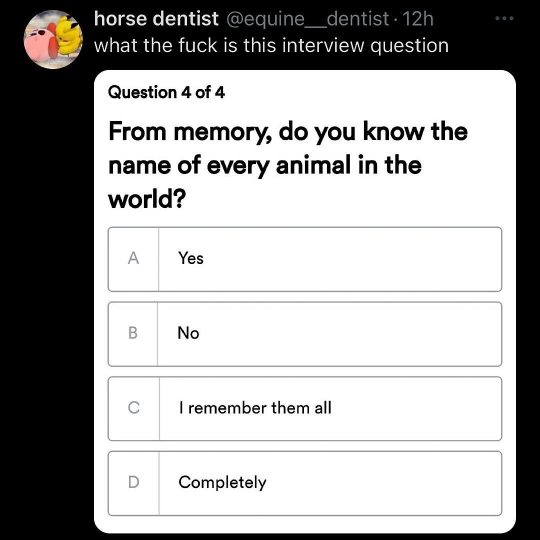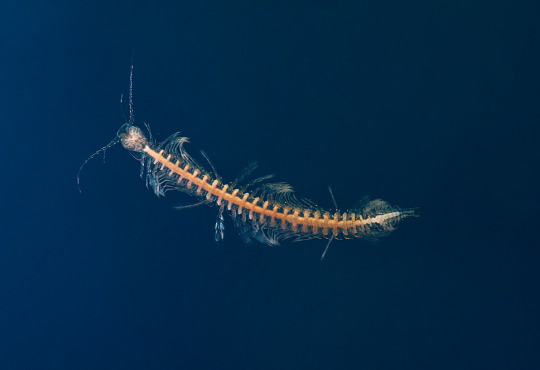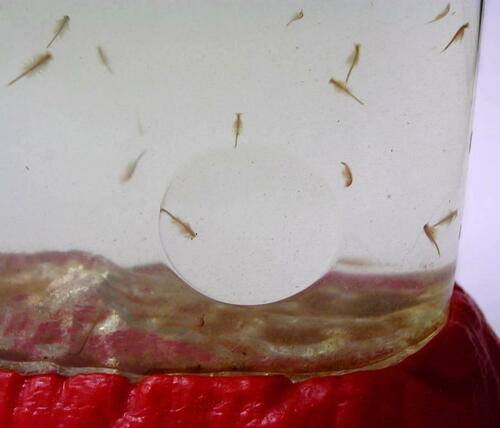#horseshoe crabs springtails barnacles and centipedes are in
Explore tagged Tumblr posts
Text
Guy who's definition of 'bug' is all non-arachnid arthropods
#my thoughts#horseshoe crabs springtails barnacles and centipedes are in#ticks spiders and mites are out
2 notes
·
View notes
Text
don't fucking challenge me i know every beast
NON-BEASTLY BEASTS:
Non-ParaHoxozoa:
Calcarea (Calcareous Sponges)
Hexacinellida (Glass Sponges)
Demospongiae (Demosponges)
Tentaculata (Tentacled Ctenophores)
Beroida (Non-Tentacled Ctenophores)
ParaHoxozoa, Non-Nephrozoa:
Placozoa
Anthozoa (Corals, Sea Pens, and Tube-Dwelling Anenomes)
Medusozoa (Jellyfish and Hydrozoans)
Myxozoa
Xenacoelomorpha
MINIBEASTS:
Spiralia, Non-Lophotrochozoa:
Gnathifera (Rotifers and Jaw Worms)
Mesozoa
Rouphozoa (Flatworms and Gastrotrichs)
Lophotrochozoa, Non-Mollusca:
Cycliophora
Annelida (Segmented Worms)
Nemertea (Ribbon Worms)
Bryozoa
Entoprocta
Phorodina (Horseshoe Worms)
Brachiopoda
Mollusca:
Solenogastres
Caudofoveata
Polyplacophora (Chitons)
Bivalvia (Clams, Scallops, Mussels, Oysters, Cockles, and others)
Monoplacophora
Scaphopoda (Tusk Shells)
Gastropoda (Snails, Slugs, Sea Snails, Sea Slugs, and others)
Cephalopoda (Nautiloids, Cuttlefish, Squid, and Octopi)
Ecdysozoa, Non-Arthropoda:
Loricifera
Priapulida (Penis Worms [sic])
Kinorhyncha (Mud Dragons)
Nematoda (Roundworms)
Nematomorpha (Horsehair Worms)
Tardigrada (Tardigrades)
Onchyophora (Velvet Worms)
Arthropoda, Non-Mandibulata:
Pycnogonida (Sea Spiders)
Xiphosura (Horseshoe Crabs)
Acariformes (Cheese Mites, Scabies Mites, Eyelash Mites, House Mites, and others)
Opiliones (Harvestmen)
Ricinulei (Hooded Tickspiders)
Solifugae (Camel Spiders)
Parisitiformes (Ticks, Varroa Mites, and others)
Pseudoscorpiones (Pseudoscorpions)
Scorpiones (Scorpions)
Araneae (Spiders)
Amblypigi (Whip Spiders)
Urgopygi (Whip Scorpions)
Mandibulata, Non-Insecta:
Chilopoda (Centipedes)
Symphyla (Pseudocentipedes)
Pauropoda
Diplopoda (Millipedes)
Ostracoda (Seed Shrimp)
Mystacocarida
Branchiura (Fish Lice)
Pentastomida (Tongue Worms)
Copepoda (Copepods)
Tantulocarida
Thecostraca (Barnacles and others)
Malacostraca (Crabs, Lobsters, Shrimp, Isopods, Amphipods, and others)
Cephalocarida (Horseshoe Shrimp)
Branchiopoda (Fairy Shrimp, Tadpole Shrimp, Water Fleas, and others)
Remipedia
Collembola (Springtails)
Protura
Diplura (Two-Pronged Bristletails)
Insecta, Non-Neoptera:
Archaeognatha (Jumping Bristletails)
Zygentoma (Silverfish, Firebrats, and others)
Odonatoptera (Dragonflies and Damselflies)
Ephemeroptera (Mayflies)
Neoptera, Non-Holometabola:
Zoraptera (Angel Insects)
Dermaptera (Earwigs)
Plecoptera (Stoneflies)
Orthoptera (Grasshoppers, Crickets, and others)
Mantodea (Mantises)
Blattodea (Cockroaches and Termites)
Notoptera (Ice Crawlers and Rock Crawlers)
Phasmatodea (Stick Insects and Leaf Insects)
Embioptera (Webspinners)
Psocodea (Lice)
Hemiptera (Shield Bugs, Aphids, Scale Insects, Cicadas, Planthoppers, Assassin Bugs, Water Boatmen, Pond Skaters, and others)
Thysanoptera (Thrips)
Holometabola
Hymenoptera (Sawflies, Bees, Wasps, and Ants)
Strepsiptera
Coleoptera (Beetles)
Raphidioptera (Snakeflies)
Neuroptera (Lacewings, Antlions, and others)
Megaloptera (Dobsonflies and others)
Lepidoptera (Butterflies and Moths)
Trichoptera (Caddisflies)
Diptera (Flies, Mosquitoes, Gnats, Midges, Hoverflies, and others)
Mecopteroidea (Scorpionflies, Hangingflies, and Fleas)
SLIGHTLY MORE BEASTLY BEASTS:
Ambulacraria:
Echinodermata (Starfish, Sea Urchins, Brittle Stars, Feather Stars, and others)
Hemichordata (Acorn Worms and others)
Chordata (Non-Vertebrata):
Leptocardii (Lancelets)
Tunicata (Sea Squirts, Salps, Pyrosomes, and others)
Vertebrata (Non-Eutelostomi):
Myxini (Hagfish)
Hyperoartia (Lampreys)
Elasmobranchii (Sharks, Rays, and Skates)
Holocephali (Chimaeras)
Actinopterygii (Non-Acanthomorpha):
Cladistia (Bichirs and Reedfish)
Acnipenseriformes (Paddlefish and Sturgeons)
Halecomorphi (Bowfins)
Ginglymodi (Gars)
Elopocephalai (Eels, Ladyfish, Halosaurs, and others)
Osteoglossocephala (Arapaima, Goldeye, and others)
Clupei (Herrings and Anchovies)
Apelocephali (Slickheads and others)
Anotophysa (Milkfish, Beaked Salmon, and others)
Cypriniformes (Carp, Goldfish, Loaches, Minnows, and others)
Characiformes (Characins, Pacu, Pirahnas, Tetras, and others)
Gymnotiformes (Knifefish and Electric Eels)
Siluriformes (Catfish)
Lepidogalaxii (Salamanderfish)
Protacanthopterygii (Salmon, Pike, Trout, Barreleye, and others)
Stomiati (Smelts, Marine Hatchetfish, and others)
Ateleopodia (Jellynose Fish)
Aulopa (Bombay Duck and Lancetfish)
Myctophata (Lanternfish)
Acanthomorpha:
Lampridacea (Oarfish, Opah and others)
Paracanthomorphacea (Cods, Dories, Cavefish, and others)
Polymixiacea (Beardfish)
Berycimorphaceae (Fangtooths, Pineconefishes, and others)
Holocentrimorphaceae (Soldierfish)
Ophidiiformes (Pearlfish)
Batrachoidimophara (Toadfish)
Gobiomorpharia (Seahorses, Pipefish, Tunas, Flying Gurnards, and others)
Anabantaria (Gouramis, Swamp Eels, and others)
Carangaria (Swordfish, Flatfish, Remoras, and others)
Ovalentaria (Blennies, Cichlids, Flying Fish, Mullets, and others)
Eupercaria (Anglerfish, Pufferfish, Wrasses, Sunfish, Sticklebacks, Lumpsuckers, Lionfish, Angelfish, Perches, Archerfish, Triggerfish, Bass, and others)
Sarcopterygii:
Actinistia (Coelocanths)
Dipnoi (Lungfish)
BEASTS PROPER:
Lissamphibia
Salientia (Frogs and Toads)
Caudata (Salamanders and Newts)
Gymnophiona (Caecilians)
Reptilia (Non-Aves)
Rhynchocephalia (Tuatara)
Dibamidae (Blind Skinks)
Gekkota (Geckos and Flap-Footed Lizards)
Scinciformata (Skinks and others)
Laterata (Tegus and Worm Lizards)
Anguimorpha (Slow Worms, Monitors, Gila Monster, and others)
Iguania (Anoles, Iguanas, Chameleons, and others)
Serpentes (Snakes)
Testudines (Turtles and Tortoises)
Crocodilia (Crocodiles, Gharials, Alligators, and Caiman)
Aves (Non-Passeriformes):
Palaeognathae (Ostriches, Kiwis, and others)
Galloanserae (Chickens, Ducks, and others)
Mirandornithes (Flamingos and Grebes)
Columbimorphae (Doves and others)
Otidimorphae (Cuckoos, Turacos, and Bustards)
Gruimorphae (Gulls, Cranes, Auks, and others)
Ophistocomidae (Hoatzins)
Strisores (Hummingbirds, Nightjars, Potoos, and others)
Phaethoquornithes (Boobies, Loons, Ibises, Penguins, Albatrosses, Tropicbirds, and others)
Acciptirimorphae (Vultures, Hawks, Eagles, and others)
Strigiformes (Owls)
Coraciimorphae (Kingfishers, Woodpeckers, Quetzals, and others)
Cariamiformes (Seriemas)
Falconiformes (Falcons)
Psittaciformes (Parrots)
Passeriformes:
Acanthisitti (New Zealand Wrens)
Tyranni (Overnbirds, Spadebills, Gnateaters, and others)
Menurida (Lyrebirds and others)
Climacterida (Bowerbirds and others)
Meliphagida (Honeyeaters, Bristlebirds, and others)
Orthonychida (Logrunners and others)
Corvides (Crows, Jays, Boatbills, Shriketits, Sittellas, Birds-Of-Paradise and others)
Passerides (Satinbirds, Sparrows, Larks, Tits, Oxpeckers, Thrushes, Wrens, Finches, Tanagers, Nuthatchers, and others)
Mammalia (Non-Laurasiatheria):
Monotremata (Platypus and Echidnas)
Marsupialia (Kangaroos, Opossums, Wombats, and others)
Xenarthra (Anteaters, Sloths, and others)
Athrotheria (Elephants, Manatees, Aardvarks, and others)
Lagomorpha (Rabbits, Hares and others)
Rodentia (Mice, Rats, Cavies, Beavers, Squirrels, and others)
Scandentia (Treeshrews)
Dermoptera (Colugos)
Primates (Lemurs, Marmosets, Baboons, Gibbons, Chimpanzees, and others)
Lauasiatheria (Non-Carnivora):
Eulipotyphla (Shrews, Moles, Hedgehogs, and others)
Chiroptera (Bats)
Artiodactyla (Girrafes, Deer, Whales, Pigs, Camels, and others)
Perissodactyla (Horses, Tapir, and Rhinoceros)
Pholidota (Pangolins)
Carnivora:
Viverroidea (Hyenas, Mongooses, Civets, and others)
Feloidea (Lions, Tigers, Caracals, Wildcats, Leopards, and others)
Nandiniidae (African Palm Civet)
Caninae (Wolves, Foxes, and others)
Ursidae (Bears)
Musteloidea (Skunks, Weasels, Otters, Raccoons, and others)
Pinnipedia (Seals, Sea Lions, and Walruses)

Interview questions for gym leaders
4K notes
·
View notes
Text
Ok time to learn about Pancrustacea
Right so I've explained on that "don't eat cicadas if you're allergic to seafood" post a bit but I love a weird factoid so: Insects are actually a weird subgroup of crustaceans.
"But how?!" I hear you cry, "what forbidden knowledge is this? surely it cannot be true!" I imagine you say because I've decided you're all incredibly melodramatic about Arthropod taxonomy like I am. First things first, let's start with some key players.
Arthropoda - a group of animals with exoskeletons and jointed (arthro-) legs (poda), your bugs your crabs your spiders your millipedes etc. Nature's crunchy bois.
Hexapoda - insects, springtails and a couple of other small arthropods, all notable for having six (hexa-) legs (poda). Flies, cockroaches, ants, moths, get stickbugged etc.
Crustacea - a massive group of arthropods that includes crabs, lobsters, water fleas, copepods, woodlice, brine shrimp, seed shrimp, scuds, mantis shrimp, barnacles and also a bunch of secret ones you've likely never heard of. Nearly all of them live in the water.
Chelicerata - not so relevant here but that's your spiders, your scorpions, your ticks, your mites, also now found to apparently includes horseshoe crabs which is a bit of a mind fuck.
Myriapoda - Centipedes and millipedes and a couple of their less famous cousins, name means "ten thousand feet" which is a bit of an overstatement but these lads sure do have a lot of legs.
Ok so if you don't know how Cladistics works, well you can google that but briefly, taxonomists organise groups of animals by descent: who's closest related to who. Groups can be monophyletic, polyphyletic or paraphyletic, but the only valid taxonomic units are monophyletic ones. I'll put a short explanation under the cut, with pictures and alt text.
Aaaanyway, so there are many different groups in the Arthropoda and their relationships to each other is A Whole Thing, taxonomists have been puzzling and fighting over it for centuries at this point. Traditionally, morphological analyses have come up with various possible configurations for the trees, like grouping Hexapods with Myriapods into Tracheata because they both breath through tracheae as opposed to Crustaceans which breath through gills. Alternatively, based on some shared features of the simple eyes it was the Crustacea and Hexapoda that were in fact sister groups, which they called Pancrustacea; there were good arguments for both. There have been a lot of competing theories but genetic data is much easier to obtain now and has confirmed and refuted many of the well reasoned theories based on morphology alone, which is great.
It's also sometimes throwing a rather exciting hand grenade into the fruit salad of existing theories, as with the Pancrustacea hypothesis. In the 2000s people started to work on that, collecting genetic data for key genes and comparing them across groups, building trees and finding that...wait what? Pancrustacea was right, but also, it wasn't. Pancrustacea clearly formed a monophyletic clade but uh, not quite how people thought it would.
Genetic data showed that Hexapoda are definitely not the sister group to Myriapoda, but they were also not a sister group to Crustacea, because when you work out the trees they're sat firmly within the Crustacea as a sister group to either the Remipedia, Branchiopoda or Cephalocarida.
Remipedes are weird centipede looking swimming crustaceans that are found in coastal cave systems, they're small, blind and kinda elegant if you go look up a video.

Cephalocarida are weird tiny looking buggers that live buried in mud, grow no more than 4mm long and generally look a bit like a worm. Some phylogenies put these with the others and other's say they go with the crabs instead. Idk.

And then there's the Branchiopoda, a large group that you're probably familiar with if you've ever raised sea monkeys, triops, fairy shrimp etc. They live in a number of habitats but almost all prefer temporary pools and lay special eggs that can survive desiccation.




These are all undeniably Crustaceans but...they're all apparently closer related to Hexapods than they are to crabs and lobsters for instance. The exact relationship is kinda fucky to work out, even with genetic data but it's kinda like people looked at humans and great apes and said "ah, we are similar to them, they are a group and we are the sister group to that" except eventually it turned out that, despite superficial similarities between the chimps(and bonobos) and gorillas, actually, humans and chimps are closer related so we're not cousins to the great apes, we are literally great apes.
So either Hexapods are crustaceans or we have to evict like, half of all Crustacean classes from Crustacea.

Ok so in this imaginary tree, A, B, C and D form a monophyletic group all descended from (1). A and B also form a smaller monophyletic group descended from (2), and likewise for C and D from (3). Shit nests like Russian dolls.
If you decided to group A, B and D together though, that would be a paraphyletic group as it doesn't include all descendants of (1), excluding C for no good reason. This has happened a lot in the past before new information has come to light, it is not a valid taxonomic unit but the names are sometimes preserved out of habit, e.g. most people don't include birds when they say "reptile", but birds are totally in that group.
If you decided to make a group from B and D because you think they look kinda similar that's a polyphyletic group, like grouping birds and mammals because they're both warm blooded. This is not a valid taxonomic unit at all.
71 notes
·
View notes
Text
New Post has been published on Reeko's Mad Scientist Lab
New Post has been published on http://reekoscience.com/science-resources/reekos-list-of-animal-classes-for-each-phylum-of-the-animal-kingdom
Reeko's list of animal classes for each phylum of the animal kingdom
Unknown phylum Micrognathozoa Acanthocephala (thorny-headed worms) Archiacanthocephala Eoacanthocephala Palaeacanthocephala (ancient thornheads) Acoelomorpha (simple soft-bodied flatworms) Acoela Nemertodermatida Annelida (segmented worms) Aelosomata Clitellata (earthworms) Myzostomida Polychaeta (bristle worms) Echiura (spoon worms) Sipuncula (peanut worms) Arthropoda (arthropods: insects, crustaceans, arachnids, centipedes, and millipedes) Chelicerata Arachnida (spiders, scorpions, and kin) Xiphosura (horseshoe crabs; only 4 extant species) Pycnogonida (sea spiders) Crustacea Branchiopoda (fairy shrimp, tadpole shrimp, water fleas, and clam shrimp) Cephalocarida (horseshoe shrimp; only 12 described species) Malacostraca (crabs, lobsters, crayfish, krill, various shrimp, woodlice, and kin) Maxillopoda (barnacles, copepods, fish lice, and other groups) Ostracoda (seed shrimp) Remipedia Hexapoda Entognatha (coneheads, two-pronged bristletails and springtails) Insecta (insects) Myriapoda Chilopoda (centipedes) Diplopoda (millipedes) Pauropoda Symphyla (pseudocentipedes) Brachiopoda (“lamp shells”) Craniforma Rhynchonellata Bryozoa (moss animals) Gymnolaemata Phylactolaemata Stenolaemata Chaetognatha (arrow worms) Archisagittoidea Sagittoidea Chordata (vertebrates, tunicates, and lancelets) Cephalochordata Leptocardii (lancelet) Tunicata Appendicularia (larvaceans) Ascidiacea (sea squirts) Sorberacea Thaliacea (salps, pyrosomes, and doliolids) Vertebrata Agnatha Cyclostomata Myxini (hagfish) Petromyzontida (lamprey) Gnathostomata […]
0 notes